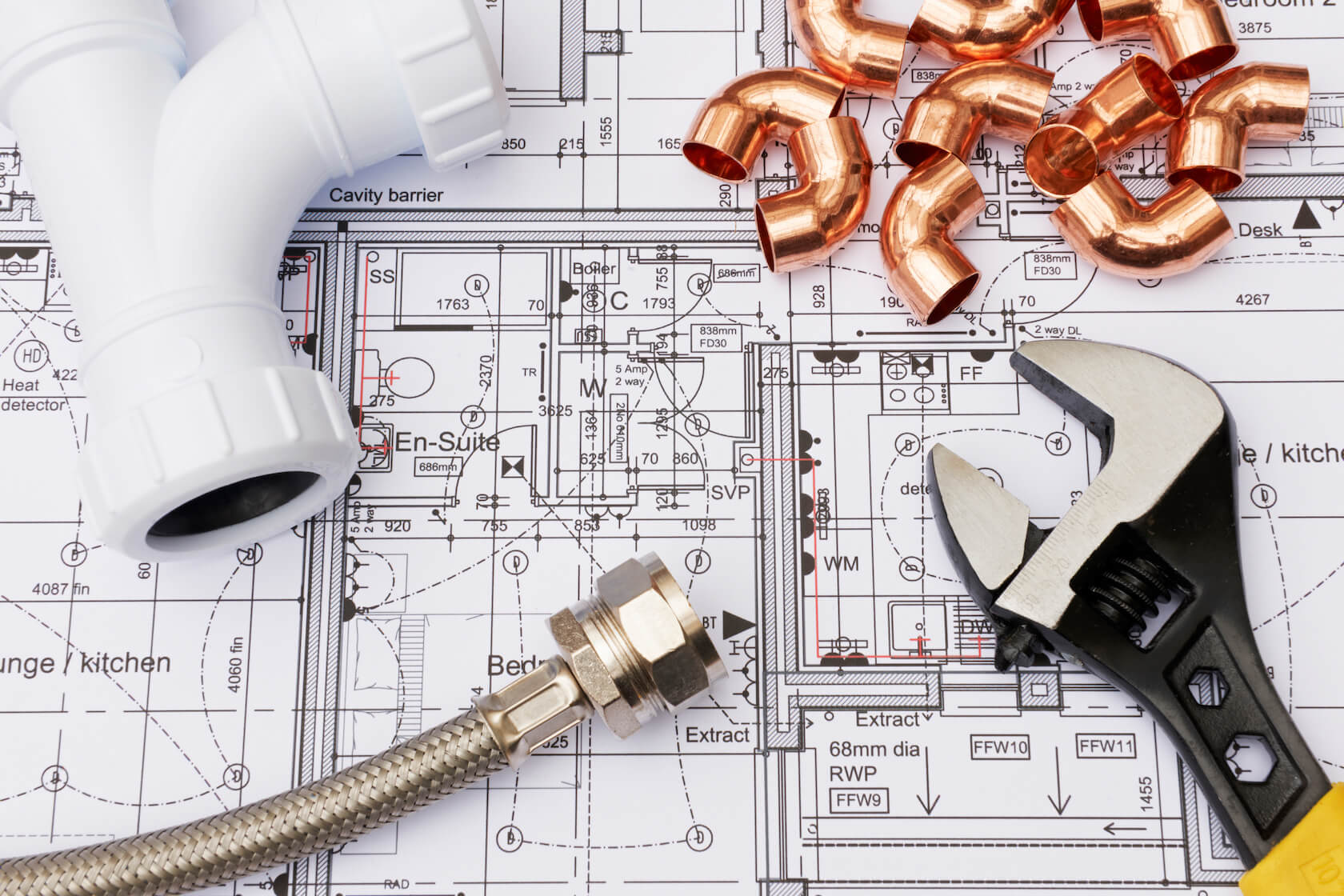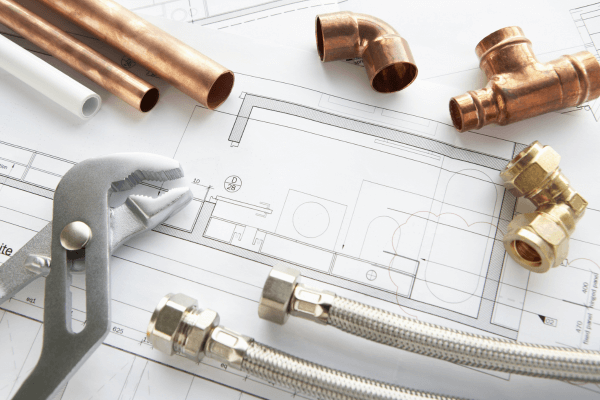Key Information About Your House's Plumbing System Anatomy
Key Information About Your House's Plumbing System Anatomy
Blog Article
Just how do you really feel in relation to Plumbing Installation 101: All You Need to Know?

Comprehending just how your home's plumbing system functions is necessary for every single homeowner. From providing clean water for drinking, cooking, and showering to securely removing wastewater, a well-kept plumbing system is vital for your family members's health and wellness and convenience. In this comprehensive guide, we'll explore the complex network that makes up your home's plumbing and deal suggestions on upkeep, upgrades, and dealing with usual issues.
Intro
Your home's pipes system is more than simply a network of pipelines; it's a complex system that guarantees you have accessibility to clean water and reliable wastewater removal. Understanding its parts and exactly how they interact can help you avoid expensive repair services and make certain everything runs efficiently.
Fundamental Parts of a Plumbing System
Pipelines and Tubes
At the heart of your pipes system are the pipelines and tubes that lug water throughout your home. These can be constructed from numerous products such as copper, PVC, or PEX, each with its advantages in regards to resilience and cost-effectiveness.
Fixtures: Sinks, Toilets, Showers, and so on.
Components like sinks, commodes, showers, and bath tubs are where water is made use of in your house. Understanding exactly how these fixtures link to the plumbing system aids in diagnosing issues and preparing upgrades.
Valves and Shut-off Points
Valves control the circulation of water in your pipes system. Shut-off valves are vital throughout emergency situations or when you require to make repair services, enabling you to isolate parts of the system without interfering with water flow to the whole home.
Supply Of Water System
Key Water Line
The primary water line connects your home to the metropolitan supply of water or a personal well. It's where water enters your home and is dispersed to different components.
Water Meter and Pressure Regulatory Authority
The water meter measures your water usage, while a pressure regulator ensures that water streams at a safe stress throughout your home's plumbing system, preventing damages to pipes and components.
Cold Water vs. Hot Water Lines
Recognizing the difference between cold water lines, which supply water directly from the main, and hot water lines, which bring warmed water from the water heater, aids in fixing and preparing for upgrades.
Drain System
Drain Pipes and Traps
Drain pipelines carry wastewater away from sinks, showers, and commodes to the drain or septic system. Traps avoid drain gases from entering your home and additionally catch debris that can create blockages.
Ventilation Pipelines
Ventilation pipes permit air right into the water drainage system, stopping suction that can slow down drainage and create traps to vacant. Appropriate ventilation is essential for keeping the integrity of your pipes system.
Importance of Proper Drain
Guaranteeing appropriate water drainage prevents back-ups and water damages. Regularly cleaning up drains pipes and keeping traps can protect against pricey fixings and prolong the life of your plumbing system.
Water Heating System
Types of Water Heaters
Hot water heater can be tankless or traditional tank-style. Tankless heating units warmth water as needed, while containers store heated water for instant usage.
Just How Water Heaters Attach to the Plumbing System
Understanding just how water heaters attach to both the cold water supply and warm water circulation lines aids in diagnosing issues like insufficient hot water or leaks.
Maintenance Tips for Water Heaters
On a regular basis purging your hot water heater to remove debris, checking the temperature setups, and checking for leakages can prolong its life-span and improve energy effectiveness.
Usual Plumbing Concerns
Leaks and Their Reasons
Leaks can take place due to aging pipes, loose installations, or high water pressure. Dealing with leaks immediately prevents water damage and mold and mildew growth.
Obstructions and Blockages
Clogs in drains and bathrooms are usually caused by flushing non-flushable items or a buildup of grease and hair. Utilizing drain screens and being mindful of what decreases your drains pipes can stop obstructions.
Indicators of Pipes Problems to Watch For
Low water pressure, sluggish drains, foul odors, or uncommonly high water expenses are indications of prospective pipes issues that must be resolved without delay.
Pipes Upkeep Tips
Normal Examinations and Checks
Set up yearly pipes evaluations to capture concerns early. Seek indications of leaks, rust, or mineral accumulation in faucets and showerheads.
DIY Maintenance Tasks
Simple tasks like cleansing tap aerators, looking for toilet leaks making use of dye tablets, or shielding exposed pipes in cool climates can avoid major pipes concerns.
When to Call a Professional Plumbing
Know when a plumbing concern calls for professional experience. Trying complicated repair services without proper expertise can bring about even more damage and higher fixing costs.
Updating Your Pipes System
Factors for Updating
Upgrading to water-efficient fixtures or changing old pipelines can improve water top quality, decrease water bills, and boost the value of your home.
Modern Pipes Technologies and Their Advantages
Check out modern technologies like wise leakage detectors, water-saving commodes, and energy-efficient water heaters that can save money and reduce ecological influence.
Price Factors To Consider and ROI
Calculate the upfront expenses versus long-lasting savings when considering pipes upgrades. Many upgrades spend for themselves via decreased energy costs and fewer repair work.
Environmental Influence and Preservation
Water-Saving Fixtures and Devices
Setting up low-flow faucets, showerheads, and toilets can dramatically minimize water usage without compromising performance.
Tips for Lowering Water Usage
Simple behaviors like taking care of leaks promptly, taking much shorter showers, and running full tons of laundry and recipes can save water and lower your energy expenses.
Eco-Friendly Pipes Options
Think about lasting plumbing products like bamboo for floor covering, which is durable and environment-friendly, or recycled glass for countertops.
Emergency Readiness
Steps to Take Throughout a Plumbing Emergency situation
Know where your shut-off valves are located and just how to turn off the water system in case of a burst pipeline or significant leak.
Value of Having Emergency Situation Contacts Helpful
Maintain contact info for local plumbing technicians or emergency solutions readily offered for quick feedback throughout a pipes crisis.
DIY Emergency Situation Fixes (When Suitable).
Momentary fixes like making use of duct tape to spot a dripping pipeline or putting a container under a dripping faucet can reduce damages until a specialist plumbing arrives.
Verdict.
Understanding the makeup of your home's pipes system empowers you to preserve it successfully, saving time and money on fixings. By following routine upkeep regimens and remaining informed regarding modern-day plumbing innovations, you can guarantee your plumbing system operates successfully for many years to come.
HOW YOUR PLUMBING SYSTEM WORKS
Which Pipes Do What?
Blue lines = fresh water supply entering the building
Red lines = hot water supply entering the building
Grey lines = pipes carrying waste away from the building and venting pipes carrying gases away from the building (through the roof)
YOUR MAIN PLUMBING SYSTEMS
There are two main plumbing systems that support your home s basic plumbing needs one that brings clean water into your home, and one that sends dirty water away from your home. Connected to the toilet, bath, shower, and other faucets in your home, these two systems keep your water flowing in the right directions.
ACCESSING FRESH WATER
Fresh and clean water is brought into your home through the main water supply line . Filtered through one pipe, this water is pressured to flow into the various fixtures in your home at any given time.
This water can be sourced from a well located on your property, a pond or river (mostly cottages), or, as in most cases, from the city s municipal water treatment centre. However, it is important to note that water that is untreated, such as the water siphoned from ponds or rivers, may not be safe to drink. Personal water supplies always need to be treated for hardness and contaminants before consumed.
MUNICIPAL WATER SUPPLIES
Improve taste and odour
Remove sediment
Eliminate hardness
Reduce chlorine
COLD WATER SUPPLY VS. HOT WATER SUPPLY
Cold water flows into your home or building through the service line, which then distributes hot or cold water to your fixtures. This line is most commonly run through a central column that runs floor to floor. Hot water runs in short and straight pipes as the longer the pipeline, the more heat that will be lost in the transfer. Having shorter pipes also allows residents to access hot water more quickly.
WASTE WATER SYSTEM
Your wastewater system is divided into two parts pipes that send wastewater away from your home and venting pipes that send sewer gas away from your home. Sewage water travels through pipes that flush the water and waste towards local sewers that are operated and managed by your city or town. Most sewer systems rely on gravity to move the wastewater to where it needs to go.
The further away from your toilet or sink, the larger wastewater pipes become. This allows for waste to be disposed of from various parts of your home or business at once without pipe blockages. The angle and flow of these pipes are also essential for keeping your waste pipes clear of build up.
https://harrisplumbing.ca/how-your-home-plumbing-system-works/

HOW YOUR PLUMBING SYSTEM WORKS
Which Pipes Do What?
YOUR MAIN PLUMBING SYSTEMS
There are two main plumbing systems that support your home s basic plumbing needs one that brings clean water into your home, and one that sends dirty water away from your home. Connected to the toilet, bath, shower, and other faucets in your home, these two systems keep your water flowing in the right directions.
ACCESSING FRESH WATER
Fresh and clean water is brought into your home through the main water supply line . Filtered through one pipe, this water is pressured to flow into the various fixtures in your home at any given time.
This water can be sourced from a well located on your property, a pond or river (mostly cottages), or, as in most cases, from the city s municipal water treatment centre. However, it is important to note that water that is untreated, such as the water siphoned from ponds or rivers, may not be safe to drink. Personal water supplies always need to be treated for hardness and contaminants before consumed.
MUNICIPAL WATER SUPPLIES
COLD WATER SUPPLY VS. HOT WATER SUPPLY
Cold water flows into your home or building through the service line, which then distributes hot or cold water to your fixtures. This line is most commonly run through a central column that runs floor to floor. Hot water runs in short and straight pipes as the longer the pipeline, the more heat that will be lost in the transfer. Having shorter pipes also allows residents to access hot water more quickly.
WASTE WATER SYSTEM
Your wastewater system is divided into two parts pipes that send wastewater away from your home and venting pipes that send sewer gas away from your home. Sewage water travels through pipes that flush the water and waste towards local sewers that are operated and managed by your city or town. Most sewer systems rely on gravity to move the wastewater to where it needs to go.
The further away from your toilet or sink, the larger wastewater pipes become. This allows for waste to be disposed of from various parts of your home or business at once without pipe blockages. The angle and flow of these pipes are also essential for keeping your waste pipes clear of build up.
https://harrisplumbing.ca/how-your-home-plumbing-system-works/
As an enthusiastic reader about Exploring Your Homes Plumbing Anatomy, I assumed sharing that piece of content was a good idea. Appreciated our write up? Please quickly share it. Help others check it out. Thank-you for taking the time to read it.
Call Today Report this page